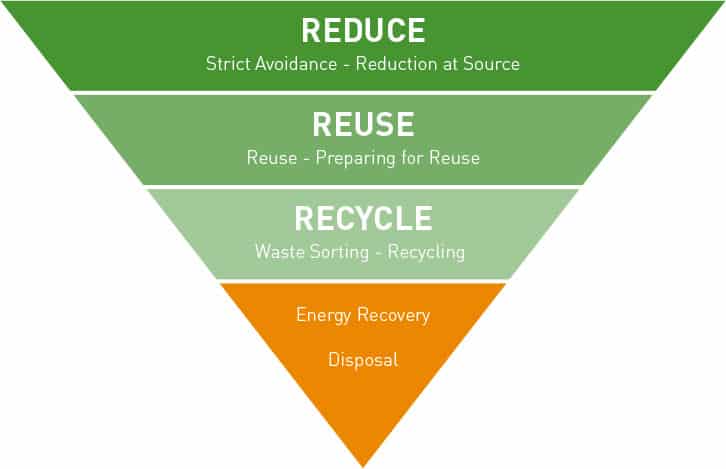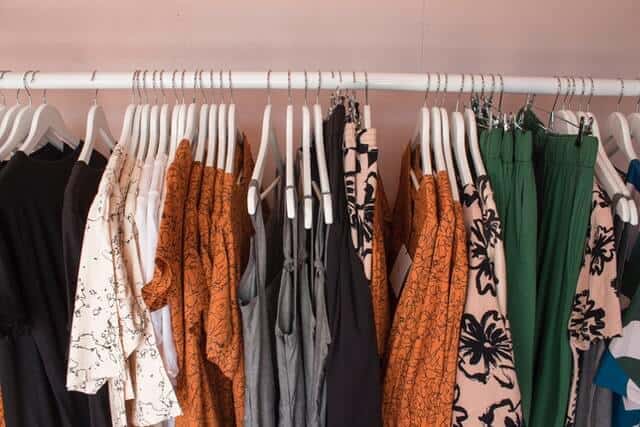Sustainable Living is a concept that has been gaining in popularity increased over the past few years. People are becoming more aware of how their actions affect the planet and want to make changes to fix the issues they see arising.
But what does sustainability mean? And how can you incorporate sustainable Living into your everyday life?
Below we will give you the Sustainable Living Tips and Ideas for a living a Sustainable Life. From the clothes you wear to the products you use to clean your house, there are so many small changes you can make to make a big difference.
What is Sustainable Living?
The sustainable Living definition is a “practical philosophy that aims to reduce personal and societal environmental impact by making positive changes which counteract climate change and other negative environmental concerns.” This is so important that currently, we are overconsuming and doing way more damage to the Earth than is sustainable. If everyone in the world were to live the same way as the average US citizen, we would need four Earths to sustain ourselves. And unfortunately, this will continue to increase unless we make changes now.
If you want to know how many Earths would be needed if everyone lived like you, go here to find your carbon footprint.
The 4 R’s of Sustainability
When discussing sustainability, you’ll often hear people refer to the “4 R’s”. They are:
- Refuse: Say no to those unnecessary plastics like straws and carry bags.
- Reduce: lower your consumption and waste production.
- Reuse: find creative ways to repurpose your items instead of throwing them away.
- Recycle: recycling should generally be your last resort if you have already refused, reduced, or reused an item. Having a proper understanding of what you can recycle and how to recycle best, it is imperative.

Is Zero Waste Actually Sustainable
You may also hear people talking about “zero waste living” when discussing sustainability. Based on Sustainable Living practices and philosophies, zero waste is “the conservation of all resources by means of responsible production, consumption, reuse, and recovery of products, packaging, and materials without burning and with no discharges to land, water, or air that threaten the environment or human health.”
The idea of creating zero waste can seem overwhelming, but as Zero Waste Chef, Anne-Marie Bonneau, said, “We don’t need a handful of people doing zero waste perfectly. We need millions of people doing it imperfectly.”
Is Sustainable Living plan Feasible in this Day and Age?
Learning more about the statistics and shocking news of how far we have damaged the planet can be overwhelming. It can be easy to think that we have gone too far and that leading a sustainable life isn’t possible today.
But there is hope out there. Millennials (those aged between 22 and 35) lead the way with 60% saying that they would pay more for eco-friendly products. This is evident through the rise in sales of products like reusable coffee cups and reusable water bottles, vegan skincare, and vegetarian foods.

Sustainable Living Ideas
Sustainable Food Choices
Grocery Shopping
Recent statistics state that the average person uses 150 plastic bags each year. Although they may seem convenient and useful, 1 million plastic bags are thrown away each minute, and there must be more sustainable living products.
Here are some Sustainable Living Shopping tips you can try next time you visit the grocery store:
- Make sure to bring your reusable shopping bags. Leave them right by the door or somewhere that you’re sure not to forget them.
- You can also invest in reusable produce bags. They are usually made from mesh or linen and will save you from using a flimsy plastic bag. They also keep your produce fresher for longer.
- Opt for buying things in glass jars or metal tins. These materials are recyclable, or you can repurpose them for storage.
- Buy local and in-season produce. Seasonal produce lasts longer, and local food requires less transport (reducing emissions). Choose a local farmers market over a traditional grocery store if you can.
- Bulk stores are increasing in popularity, so there’s sure to be one near you. Bulk stores allow you to fill paper bags or jars and containers with loose ingredients like pasta, rice, and beans.
You can also live more sustainably by reducing your intake of animal products. A 2016 study found that current emissions could be reduced by up to 70% by choosing a vegan diet. Any small change counts, so start by adding one or two meat-free meals a week. With so many meats and dairy alternatives hitting the market, it’s becoming more comfortable and easier to make them more sustainable choices.

Sustainable Food Practices
We waste one-third of food produced for human consumption each year.
Here are some things you can do to lower your food waste:
- Plan out your meals for the week and only buy what you need. This will also save you time and money.
- Freeze leftovers to make them last longer.
- Make your sauces and stocks so you can tailor the amount to your needs.
- Try planting your vegetables. Even if you live in a small space, you can try growing your herb garden.
- Sustainable Living Garden: Compost any relevant food waste. If you don’t have a garden, research local community gardens that may have compost disposal locations.
Sustainable Fashion Choices
Sustainable Living Blog Good On You describes fast fashion as “cheap, trendy clothing, that samples ideas from the catwalk or celebrity culture and turns them into garments in high street stores at breakneck speed to meet consumer demand.”
Clothing production doubled between 2000 and 2014, and it’s clear that this is not done sustainably. The total greenhouse gas emissions from textiles production are more than those of all international flights and maritime shipping combined.
Already we are seeing consumers becoming more aware of the harmful effects of the fashion industry, and there are a few easy choices you can make.

Shop Your Closet
The most sustainable outfit you can choose is one that you already own. Many of us have more clothes than we need, so try experimenting with different outfit pairings and wearing your current clothing in different ways. Try developing what’s known as a “capsule wardrobe.” Building a capsule wardrobe involves cutting down the number of clothes in your closet to cut down on decision fatigue and to make sure that you’re only wearing clothes that you’re absolutely in love with. Replace your online shopping addiction by planning out your outfits for the week.
Taking Care of Your Clothes
Taking good care of your clothes is also really important as it means you will have to buy replacements less often.
Here are our top tips for extending the life of your clothes:
- Don’t wash your clothes after every wear. It may be tempting to wash your clothes every time you wear them, but we don’t need to be washing our clothes as often as we do.
- Wash your clothes in a cold setting to reduce emissions and lengthen the life of your clothes.
- Hang your clothes out to dry instead of using a dryer.
- Use eco-friendly cleaning products. Try making your laundry detergent with simple ingredients like baking soda and essential oil.
Buy Second Hand Clothes
If you do need to replace or purchase a new clothing item, it’s always best to try buying second-hand first. More than enough clothing items have already been produced, with 85% of all clothing and textiles ending up in a landfill.
If you don’t have any second-hand shops near you, try one of the many online thrift stores such as Depop, Poshmark, or ThredUp.
If you need something that you can’t buy second-hand (like shoes or underwear), make sure to research your options and choose to spend your money on sustainable and ethical brands. Please make sure the materials used are eco-friendly. The brand has clearly outlined its sustainability practices. No one along the supply chain is underpaid or put in unsafe working conditions.
Sustainable Giving
If you’re looking to get rid of some of your clothes, here are some sustainable ways to do so:
- Sell clothes in good condition on online marketplaces to ensure that your clothes are going to the right home.
- Donate clothes to second-hand shops if need be, but be aware that they are usually overwhelmed with donations. Many people abuse them by donating broken and dirty items.
- If you have a fractured garment, try repairing it or getting creative and turning it into a new piece.
- Use anything that’s too broken or dirty to donate as cleaning rags or even blankets for your pets!
Sustainable Living Home:
Sustainable Bathroom
Your bathroom is likely somewhere that is not as sustainable as it could be. Beauty and wellness products are often in plastic packaging and contain ingredients that are as bad for the environment as they are for your health.
Here are some simple sustainable bathroom products switches you can make:
- Use a bamboo toothbrush instead of a plastic one. Bamboo toothbrushes are compostable at the end of their use. You can also find tooth powder or tabs to replace your toothpaste, and plant-based, compostable floss.
- Use bar soaps, shampoos, and body lotions instead of products in plastic bottles. Pretty much any bathroom product you can think of can be found in package-free bar form. If you prefer liquid products, try your local bulk shop and see if you can fill your existing bottles with a new product.
- Opt for bamboo cotton buds and pads, or even switch to washable, reusable cotton pads to cut down on waste.
- Switch to a metal, reusable razor. All you need to do is replace the blades, and the razor will last you years instead of ending up in a landfill as so many plastic razors do.
- Explore DIY recipes like coconut oil lip balm or baking soda face scrub.
Sustainable Cleaning Products switches
Cleaning your home also involves a high number of plastic and highly toxic products.
- Visit your local bulk store. In addition to bulk foods and beauty products, bulk stores often sell cleaning products in bulk that you can fill in your containers. You can invest in metal or glass bottles, but there’s also nothing wrong with reusing old plastic bottles. It’s always better to use something you already own.
- There is no need for a paper towel or disposable plastic wipes. As we mentioned above, you can use your old clothes (socks and underwear work particularly well) to clean rags or choose washable microfibre towels if you need to buy new ones.
- Choose wooden or bamboo cleaning tools over plastic ones.
- Make it yourself! Don’t waste money on fancy cleaning products with too many ingredients to count when making your products with simple household items like vinegar, lemon juice, and baking soda.
Sustainable Living is becoming more critical than ever, and it is crucial to make changes now that will help the environment and make the world a great place to live for us and future generations.



